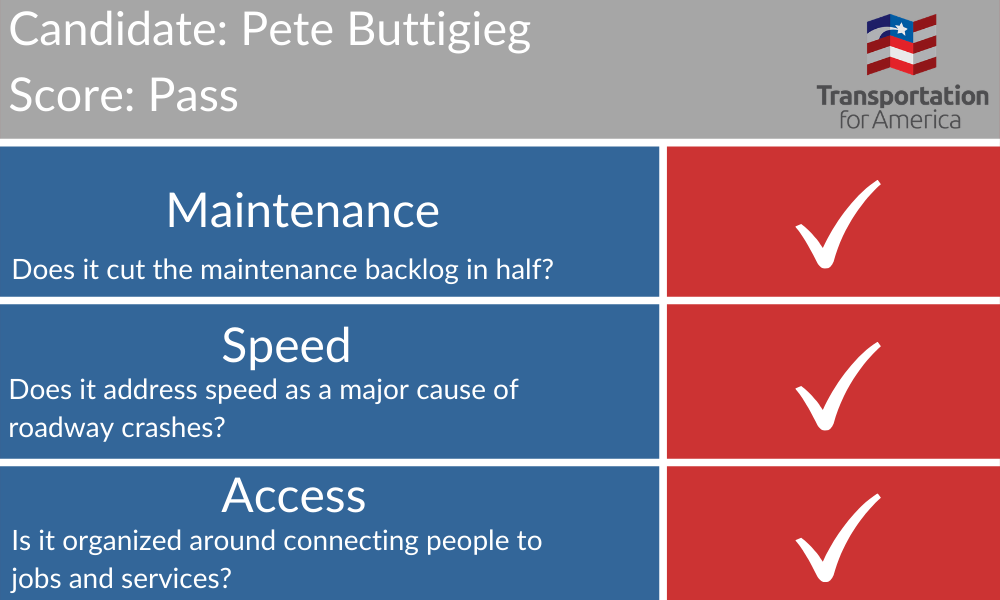How we ranked Pete Buttigieg’s transportation plan during his presidential campaign
Former South Bend mayor Pete Buttigieg has just been picked as President-elect Joe Biden’s nominee for Secretary of Transportation. Transportation for America is excited about this pick for one big reason: his transportation plan from his presidential campaign was one of two that received passing marks from us. Here’s what we wrote back in February on Buttigieg’s high score, using our three principles for transportation policy as a rubric.

Former South Bend mayor Pete Buttigieg would make big changes to the formulas at the heart of the transportation program. His plan would require states plan for maintenance before they’re allowed to build new or wider highways with federal funding. Requiring maintenance before expansion earns Buttigieg a ✓ by our standards.
Pete’s plan calls for instituting a national Vision Zero plan, which is radical for a country where states are allowed to set targets for pedestrian fatalities above the actual number of deaths. He would require that states “actively improve their safety records or road design processes, or else lose federal funding for other roadway projects,” according to his plan.
Lastly, Mayor Pete’s plan scores high on access. He would require that states, metropolitan planning organizations (MPOs), and any other recipient of federal transportation funding demonstrate how projects improve access to jobs and services. That is key: requiring progress towards goals—and even setting goals—in order to receive funding is common sense. Sadly, it is not a feature of our current transportation program.
Pete’s plan is similar to Michael Bloomberg’s. The big difference is in how he communicates it: Buttigieg leads with funding, not what he’d do with the transportation program. We think this is a bad way to do policy. After all, in what other policy area (or facet of life, for that matter) do people tell you the price before they tell you what they’re selling?
What isn’t clear is how funding will be shifted between modes, if at all. With a President Pete, are we still in a world where highways get 80 percent of the funding pie, leaving only 20 percent for transit?
Read the full blog from February where we ranked all presidential candidates’ transportation plans.




















4 Comments